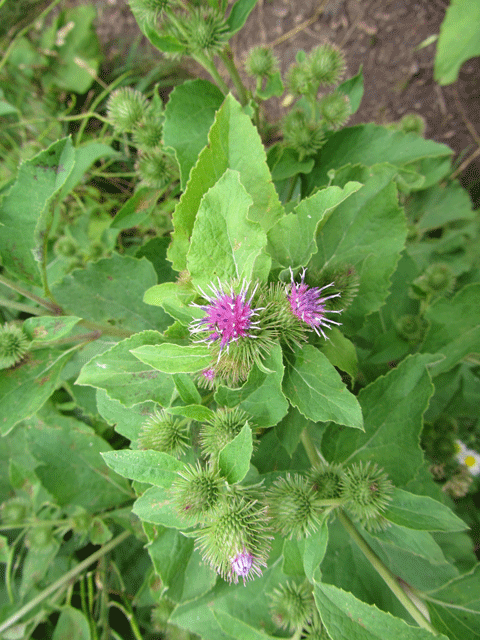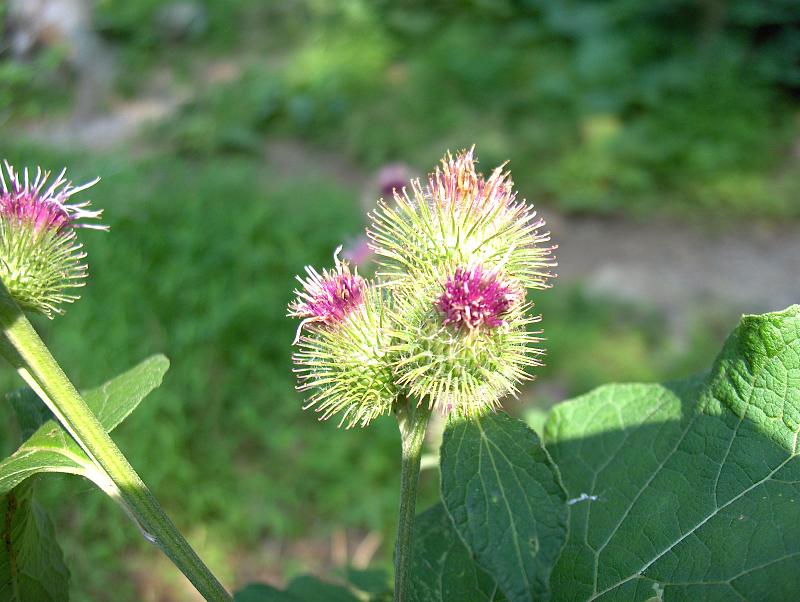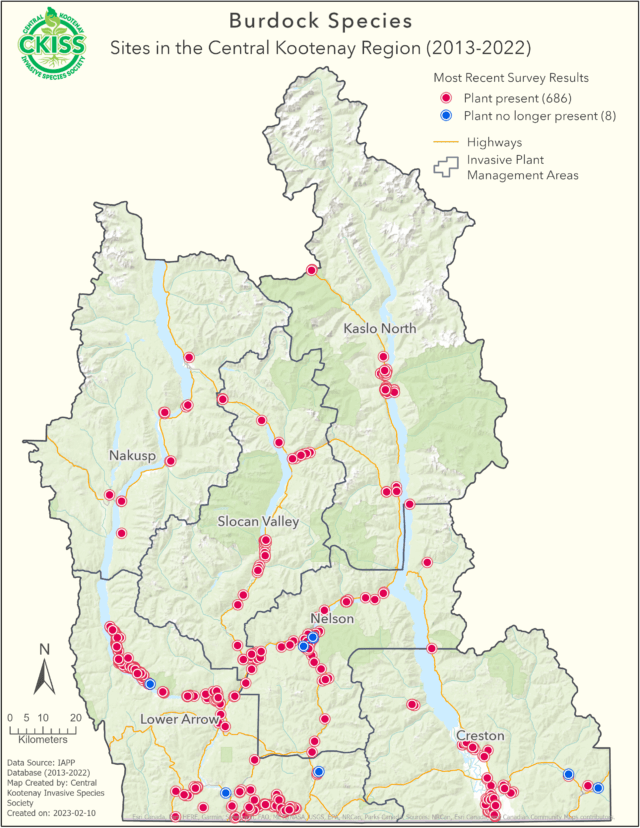Arctium minus
Description
- Prefers areas with soil moisture and fertile soils, and thrives where there has been recent disturbance.
- First-year growth forms a rosette with large, hairy, heart-shaped leaves which shade out smaller vegetation.
- The leaf edges are wavy and can be toothed, dark green on top, and fuzzy underneath.
- In its second year, common burdock can reach up to 3 m in height.
- The flowers are purple and appear in short clusters along the stems.

Introduction and spread
- The prickly seed heads of burdock are designed to attach and travel on passers-by for dispersal.
- The seeds can easily spread by attaching to clothing, boots, or animal fur.
Consequences of invasion
- Bats and birds can become tangled in the burrs of burdock, which can to lead to death.
- Burrs can become stuck in the wool and hair of farm animals. If burdock does become entangled in the wool of a sheep, it devalues it.
Status in the CKISS region
- Burdock has become widespread in the CKISS region. Its management priority is currently classified as Strategic Control on the CKISS Annual Priority List.
- While it is not realistic to eradicate this species at the landscape level, this species may be treated at high priority sites (e.g. wildlife habitat, corridors of spread, adjacent to agricultural land, restoration sites, etc.) based on specific land management objectives.
- To learn more about how CKISS classifies and manages invasive species, see our Invasive Species Priority Lists page.
Integrated pest management options
Prevention
- Avoid soil disruption wherever possible.
- If soil is disturbed, re-seed and encourage the growth of competing vegetation.
- Be PlantWise to avoid spreading burdock.
Mechanical treatment
- To prevent the spread of burdock, it is important not to let the plant go to seed.
- Mowing and cutting can be effective after the plant has bolted, but before it flowers.
- When burdock is in its first year of growth, tilling the soil can reduce growth as it is intolerant of cultivation.
Chemical
- Certain chemical controls can be used on burdock. Consult a professional.
Biological
- There is currently no biological control available for common burdock.


